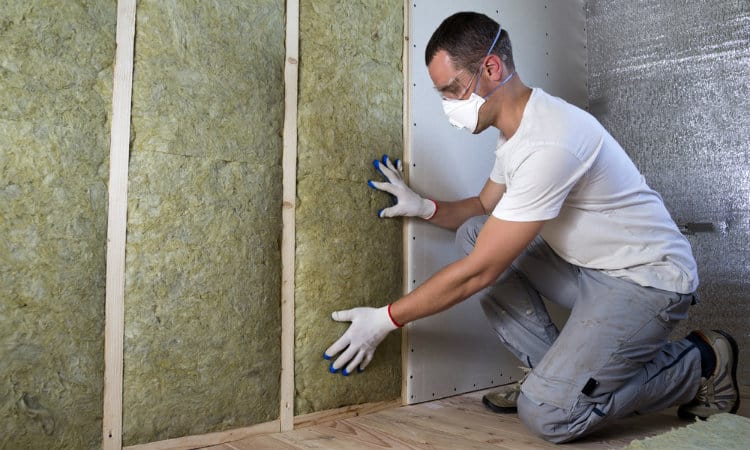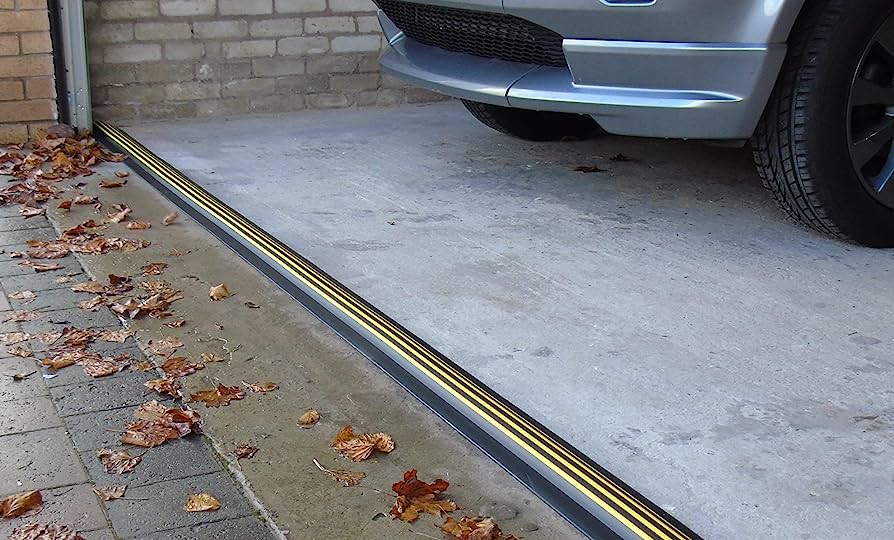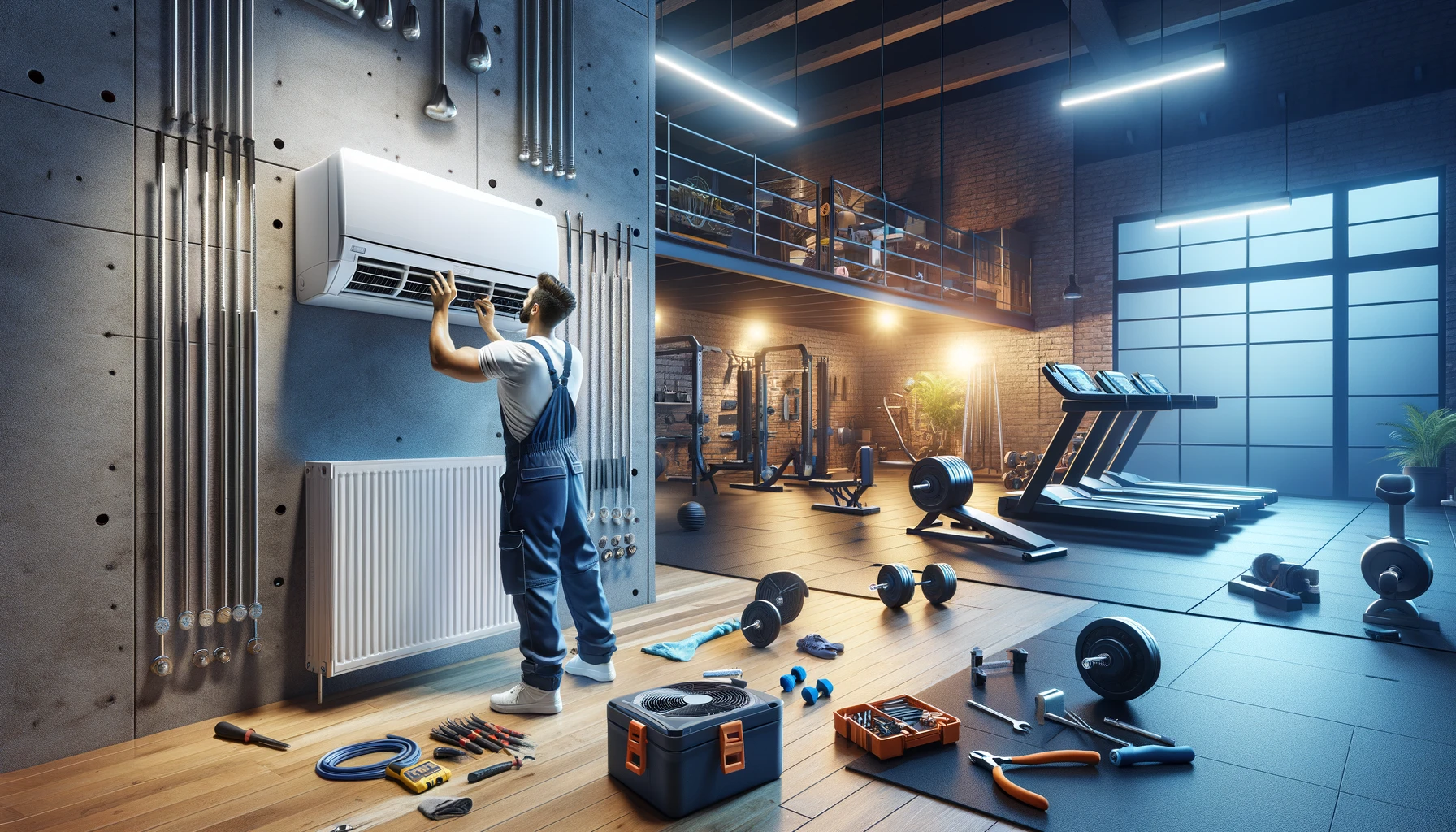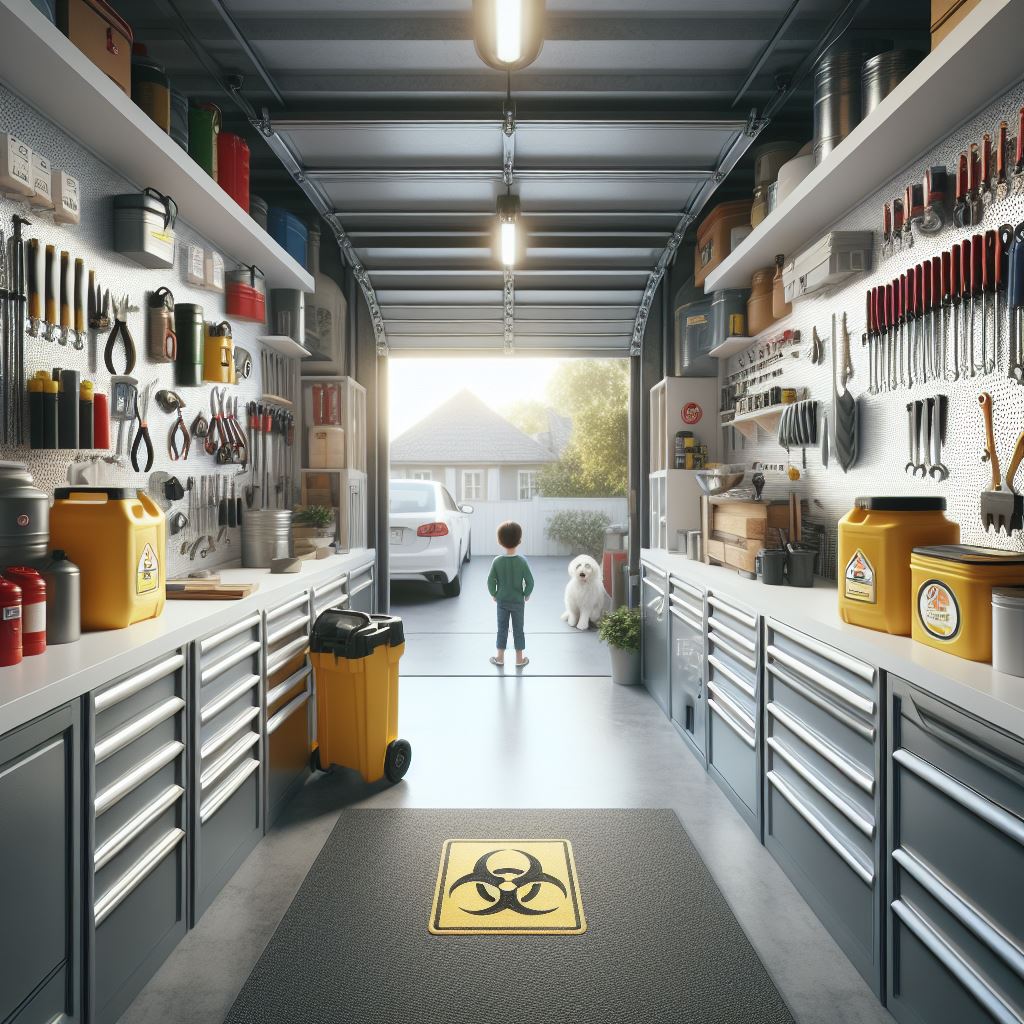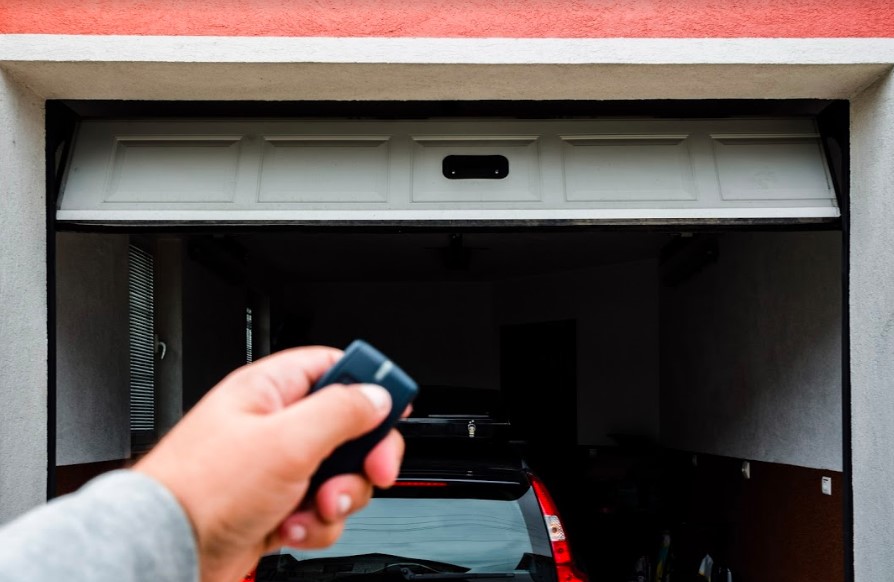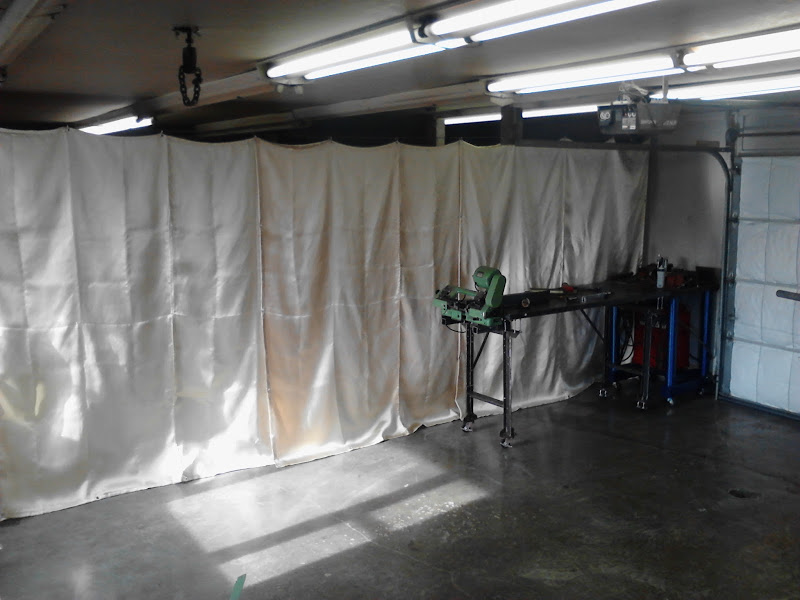Tired of the constant racket disrupting your home office or DIY projects? Imagine having a serene workspace where you can concentrate without being interrupted by external clamor. Whether it’s for honing your craft, hosting band practice, or creating a peaceful haven away from the hustle and bustle, soundproofing your garage could be the game-changer you’ve been seeking. In this post, we’ll delve into practical tips and tricks to soundproof your garage and transform it into a tranquil retreat. From cost-effective solutions to innovative hacks that won’t break the bank, we’ve got you covered.
Key Takeaways
- Assess the current soundproofing of your garage by considering the acoustics, potential noise sources, and areas that need improvement.
- Soundproofing your garage can create a peaceful and productive workspace, reducing outside noise and preventing disturbance to neighbors.
- Prioritize soundproofing the walls, ceiling, doors, and windows to minimize sound transmission and enhance the overall effectiveness of the workspace.
- Consider cost-effective strategies such as using weather stripping, acoustic caulk, and heavy curtains to enhance the soundproofing of your garage.
- Furnish your garage with sound-absorbing materials like rugs, curtains, and acoustic panels to further reduce noise and improve the acoustics of the space.
- Seek professional consultation for tailored advice and consider professional soundproofing services for a comprehensive solution.
Understanding Garage Acoustics
Airborne Sounds
Airborne sound transmission refers to the propagation of noise through the air. In a garage workspace, this can include sounds from traffic, neighbors, or even just general outdoor noise. These airborne noises can be highly disruptive to your concentration and overall productivity. Reducing airborne noise is crucial for creating a peaceful and quiet workspace in your garage.
To minimize the impact of airborne sounds on your garage workspace, consider installing soundproofing materials such as acoustic panels or foam insulation. These materials are designed to absorb and dampen airborne noise, preventing it from entering your workspace. Sealing any gaps or cracks in windows and doors can significantly reduce the amount of external noise that penetrates into the garage.
Structure-Borne Sounds
Structure-borne noises originate from vibrations transmitted through solid structures such as walls, floors, or ceilings. This type of noise can be soundproof generated by various sources including machinery vibrations or footsteps from adjacent areas. Addressing structure-borne sounds is equally important when aiming to create a quiet and serene environment within your garage workspace.
Minimizing the impact of structure-borne noises involves adding resilient underlayment beneath flooring to absorb vibrations and prevent them from traveling across surfaces. Furthermore, using decoupling techniques for walls and ceilings helps break up direct pathways for sound transmission. By implementing these methods, you can effectively mitigate the effects of structure-borne noises on your garage’s acoustics.
Noise Impact
The effects of excessive noise on productivity and well-being cannot be overstated. Constant exposure to high levels of noise pollution can lead to increased stress levels, reduced focus, and even health issues over time if not addressed properly.
Recognizing the detrimental impact of noise pollution highlights the importance of taking proactive measures to mitigate its effects within your garage workspace. By investing in quality soundproofing solutions tailored specifically for garages—such as acoustic barriers or specialized door seals—you can significantly reduce unwanted external noises that could disrupt your workflow.
Benefits of Garage Soundproofing
Enhanced Quietness
Creating a quiet workspace in your garage through soundproofing offers numerous benefits. By achieving optimal quietness, you can significantly reduce the impact of external noise, creating a tranquil environment for work or leisure activities. Methods such as insulating walls and ceilings, installing sound-absorbing materials, and sealing gaps and cracks can effectively minimize unwanted noise intrusion.
To achieve enhanced quietness in your garage workspace, consider implementing strategies such as using acoustic panels to absorb sound waves, adding weatherstripping to seal gaps around doors and windows, and installing mass-loaded vinyl barriers to block airborne noise transmission. These measures can contribute to creating an environment that promotes peace and tranquility.
Workspace Productivity
The link between a quiet workspace and increased productivity is undeniable. A peaceful environment fosters focus and concentration by minimizing distractions caused by external sounds. Effective soundproofing measures not only reduce noise from outside but also prevent echoes or reverberations within the space itself.
By creating an environment conducive to concentration with proper soundproofing techniques, you can enhance your productivity levels significantly. Whether you use the garage as a home office or a workshop, reducing disruptive noises allows you to complete tasks efficiently without interruptions.
Property Value
Soundproofing your garage can have a positive impact on the overall property value. A well-insulated and acoustically treated garage adds versatility to your property by providing a quiet space suitable for various purposes like working from home or engaging in hobbies that require concentration.
This enhancement increases desirability among potential buyers or tenants who may be seeking a versatile space with minimal noise disturbance. The prospect of having a functional yet peaceful area within the property can make it more attractive in the real estate market.
Initial Soundproofing Assessment
Acoustic Analysis
The first step is conducting an acoustic analysis. This assessment is crucial in understanding the current acoustic profile of the space. By analyzing factors such as reverberation, insulation, and potential sound leaks, you can pinpoint areas that require improvement. For instance, if the analysis reveals that your garage has poor insulation or excessive echo, you can then focus on addressing these specific issues.
Utilizing data from the acoustic analysis allows for more effective soundproofing solutions. For example, if the assessment indicates that external noise pollution is a significant problem due to insufficient insulation in walls and doors, you can prioritize adding additional layers of sound-absorbing materials to mitigate this issue effectively.
Identifying Noise Sources
Identifying common noise sources in your garage environment is another critical aspect of initial soundproofing assessment. Common sources may include noisy machinery (like power tools), vehicle traffic outside, or even reverberations caused by hard surfaces within the garage itself.
By recognizing specific factors contributing to noise pollution within your workspace, you gain valuable insight into where improvements are needed most urgently. For instance, if it’s determined that loud power tools are a primary source of disturbance during work hours, implementing measures such as purchasing quieter equipment or using them during periods when neighbors are less likely to be disturbed could significantly reduce overall noise levels.
Addressing individual noise sources also involves considering elements like weather stripping on doors and windows to prevent external sounds from infiltrating your workspace. Installing acoustic panels or foam on walls can help absorb internal noises caused by echoes and vibrations from machinery.
Soundproofing Garage Walls and Ceiling
Insulation Materials
The choice of insulation materials plays a crucial role. Different options like fiberglass, foam boards, and mineral wool offer varying levels of sound absorption. For instance, dense materials such as mineral wool are effective at reducing airborne noise, while foam boards excel in dampening low-frequency sounds.
Selecting suitable insulation materials depends on specific needs. If the primary concern is blocking external noise from entering the workspace, mass-loaded vinyl or MLV can be an excellent choice due to its high density and flexibility. On the other hand, if thermal insulation is also a priority alongside soundproofing, fiberglass could be a more practical option.
Drywall Installation
Proper installation of drywall is vital for achieving optimal soundproofing results in your garage workspace. Techniques such as double-layered drywall with Green Glue damping compound between layers significantly enhance sound reduction by absorbing vibrations and preventing them from passing through the walls.
Ensuring quality and precision during the drywall installation process involves attention to detail when sealing gaps or joints between panels. Any small openings can compromise the effectiveness of soundproofing efforts by allowing sound waves to penetrate into or out of the space.
Mass Loaded Vinyl
Incorporating mass loaded vinyl (MLV) offers several benefits for enhancing soundproofing in your garage workspace. This specialized barrier material effectively blocks airborne noises while being relatively thin and flexible compared to traditional thick barriers.
The effectiveness of mass loaded vinyl lies in its ability to add mass without substantial thickness, making it ideal for applications where space constraints exist. By adding MLV beneath drywall or within stud cavities during construction or renovation projects, you can achieve superior noise reduction without significant alterations to existing structures.
Upgrading Doors and Windows
Upgrading doors and windows is crucial. Insulated doors play a significant role in minimizing noise transmission, creating an environment conducive to focus and productivity. By choosing insulated doors, you can significantly reduce the amount of external noise that enters the space.
Installing insulated doors not only enhances soundproofing but also improves overall acoustics within the garage. The dense insulation material effectively absorbs sound waves, preventing them from traveling through the door. This creates a quieter atmosphere ideal for working or engaging in hobbies without disturbances from outside noise.
Effective sealing techniques are essential for comprehensive soundproofing. Implementing these techniques helps prevent sound leakage by sealing gaps and cracks around the doors and windows. It’s important to use specialized materials designed for this purpose, such as weather stripping and acoustic caulking, to ensure maximum effectiveness in reducing sound transmission.
Utilizing acoustic panels is another effective method of enhancing sound absorption within your garage workspace. These panels are designed to capture and convert sound energy into heat, thereby reducing echo and reverberation within the space. Customizing their placement based on the specific layout of your garage allows you to achieve optimal results in terms of noise reduction.
Exploring different types and designs of acoustic panels enables you to select options that best suit your preferences while complementing the aesthetics of your workspace. Whether it’s fabric-wrapped panels or decorative printed ones, there are various choices available to cater to both functional and visual aspects.
Soundproofing the Garage Floor
Addressing the flooring is crucial. The right flooring materials and vibration dampeners can significantly reduce noise transmission and create an acoustically pleasant environment.
Flooring Materials
Choosing appropriate flooring materials plays a vital role in reducing noise within the garage. Opt for materials like rubber, carpet, or cork as they absorb sound waves effectively. These materials minimize impact noise from footsteps or moving furniture, enhancing overall acoustic performance in the space. By strategically selecting these materials, you can achieve better sound insulation and create a quieter atmosphere for your workspace.
For instance:
- Rubber mats or interlocking rubber tiles are excellent choices for soundproofing the floor.
- Carpet with thick padding can help deaden impact noises while also adding warmth to the space.
Enhancing soundproofing through strategic flooring choices involves considering not only the material but also its thickness and density. Thicker flooring with higher density provides better sound absorption and reduces reverberation within the garage.
Vibration Dampeners
Understanding how vibration dampeners contribute to reducing noise is essential when aiming to create a quiet workspace. These dampeners help minimize structural vibrations caused by various activities in the garage, such as using power tools or heavy machinery. By installing vibration dampening solutions under your chosen flooring material, you can effectively decrease both airborne and impact noises.
Consider options like:
- Isolators specifically designed to reduce vibrations from machines and equipment.
- Acoustic underlayment that acts as a barrier against structure-borne sounds traveling through floors.
Installing suitable vibration dampeners not only enhances soundproofing but also contributes to creating a more comfortable environment by minimizing disturbances caused by external noises.
Noise Reduction Above the Garage Door
Enhancing Seals
Enhancing seals around windows and doors is crucial. By improving these seals, you can significantly reduce the amount of external noise that enters your workspace. Utilizing weather-stripping and sealants effectively enhances the seals, creating a barrier against unwanted sound infiltration. Ensuring tight seals around windows and doors is essential in preventing external noise from disrupting your quiet environment.
In addition to this, incorporating additional barriers above the garage door can further enhance soundproofing efforts. Exploring various supplementary barrier options allows for maximum noise reduction within your workspace. Customizing these barrier additions based on specific noise challenges ensures that you address all potential sources of disturbance effectively.
Barrier Additions
Customizing barrier additions above the garage door plays a significant role in achieving optimal noise reduction levels within your workspace. Whether it’s installing specialized acoustic panels or adding extra layers of insulation, each barrier addition contributes to creating an environment free from disruptive sounds. By carefully selecting and integrating these barriers, you can create an effective shield against unwanted noise infiltration into your quiet space.
Moreover, exploring different supplementary barriers such as soundproof curtains or heavy-duty drapes provides additional protection against external disturbances. These customizable solutions cater to specific needs and help mitigate any remaining sources of unwanted noise within the garage area.
Furnishing for Sound Absorption
Strategic Placement
Strategic placement of sound-absorbing furniture and materials is crucial in achieving optimal results when soundproofing your garage. By strategically positioning these items, you can effectively minimize the transmission of noise into or out of the space. For instance, placing bookshelves filled with books along the walls acts as a barrier to absorb and dampen sound waves, reducing reverberation and echo within the garage. Consider arranging upholstered furniture such as sofas or armchairs strategically to create a buffer against unwanted noise.
Thoughtful consideration should be given to the layout and design of your workspace. For example, if you’re setting up a home office in your garage, position large fabric-covered bulletin boards on the walls behind your desk or work area. These boards not only serve as functional organizational tools but also act as effective sound absorbers by trapping sound energy that hits them.
Carefully considering how each piece of furniture contributes to overall strategic placement decisions is essential. You want to ensure that every item serves a dual purpose – functionality and noise reduction – without compromising comfort or convenience in your workspace.
Material Selection
Selecting appropriate materials tailored specifically to your soundproofing needs is fundamental in creating an acoustically comfortable environment within your garage workspace. When choosing materials for furnishing purposes, prioritize those with high-density properties such as thick curtains made from heavy fabrics like velvet or suede. These dense textiles effectively block outside noise while also absorbing interior sounds.
Evaluating material properties and performance plays a significant role in determining their suitability for effective selection when aiming for optimal sound absorption capabilities. Consider using acoustic panels made from specialized foam or fiberglass designed explicitly for absorbing sound waves rather than reflecting them back into the room.
Customizing material selection based on individual requirements allows you to tailor specific aspects of soundproofing according to unique needs such as budget constraints or aesthetic preferences while still maintaining high-performance standards.
Professional Consultation and Services
Seeking expert advice can be invaluable. Acoustic experts or consultants can provide personalized recommendations based on the specific layout and structure of your garage. By consulting with these professionals, you gain a comprehensive understanding of soundproofing solutions tailored to your needs.
Expert advice is crucial for understanding the intricacies of soundproofing materials and techniques. For example, an acoustic consultant may recommend installing specialized acoustic panels or utilizing resilient channel systems to mitigate noise transmission effectively. This level of expertise ensures that you make informed decisions about the most suitable soundproofing methods for your garage workspace.
Utilizing professional installation services is another essential aspect of achieving effective soundproofing in your garage. These services offer precise execution, ensuring that soundproofing materials are installed correctly and efficiently. Whether it’s installing acoustic insulation, sealing gaps, or mounting sound-dampening materials, experienced professionals can guarantee quality workmanship for optimal noise reduction.
Hiring professionals also provides peace of mind regarding the reliability and efficiency of the installation process. With their expertise, they can address any specific challenges posed by the garage environment while implementing tailored solutions to create an acoustically controlled space conducive to focused work.
Cost-Effective Soundproofing Strategies
Budget Planning
Budget planning is crucial. You need to allocate funds for materials and labor if you’re hiring professionals. Consider the cost of soundproofing materials such as acoustic panels, weatherstripping, and insulation.
Exploring cost-effective solutions without compromising quality is essential. For instance, instead of expensive soundproofing foam, consider using dense blankets or curtains to absorb sound. Managing expenses while achieving desired soundproofing outcomes involves researching different material options and their effectiveness.
One cost-effective approach is to consult with professionals initially to understand the scope of work required. Then, you can decide which aspects can be handled through DIY methods and where professional assistance might be necessary.
Summary
You’ve now got the lowdown on soundproofing your garage for a peaceful workspace. Understanding garage acoustics and the benefits of soundproofing are crucial. Assess your garage, upgrade walls, doors, windows, and floors. Don’t forget about noise above the garage door and using furnishings for sound absorption. Consider professional services and cost-effective strategies to get the job done right.
Ready to turn your garage into a haven of tranquility? Get cracking on those soundproofing upgrades and create the perfect workspace without any outside disturbances!
Frequently Asked Questions
How can I determine if my garage needs soundproofing?
If you find that external noises easily penetrate your garage, or if you notice a lot of reverberation and echo within the space, it’s likely that your garage would benefit from soundproofing.
What are some cost-effective strategies for soundproofing my garage?
You can start with simple solutions like adding weather stripping to doors and windows, using heavy curtains or blankets for sound absorption, and sealing any gaps or cracks in the walls. These methods can make a noticeable difference without breaking the bank.
Is professional consultation necessary for soundproofing a garage?
While it’s possible to do some basic soundproofing yourself, consulting with professionals can provide valuable insights into effective techniques and materials specific to your garage’s acoustics. They can also ensure that the job is done correctly for optimal results.
Will furnishing my garage help with sound absorption?
Yes, incorporating soft furnishings like rugs, couches, and wall hangings can significantly reduce echoes and improve overall acoustics. These items absorb sound waves rather than allowing them to bounce around the room uncontrollably.
Can upgrading just the doors and windows make a significant impact on reducing noise in my garage workspace?
Absolutely! Doors and windows are common weak points for noise infiltration. Upgrading to insulated options or adding secondary glazing will greatly reduce external disturbances while working in your quiet workspace.
